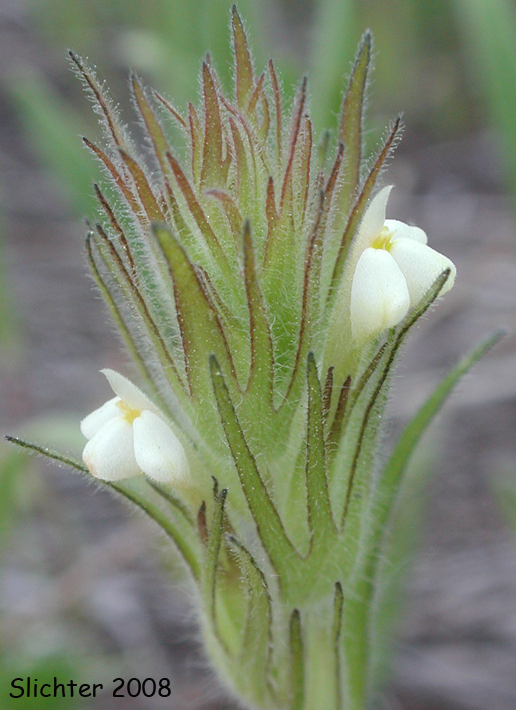

It should be cultivated in captivity, to provide stock for the establishment of additional populations on Santa Rosa Island. The populations of the soft-leaved Indian paintbrush should be monitored, and research undertaken into its habitat needs. Invasive alien plants in the critical habitat should also be decreased. Until these leases expire, the surviving populations of the soft-leaved Indian paintbrush should be protected by fencingįrom ungulates. However, a pre-existing cattle ranching operation and subleased commercial deer and elk hunting operation are operating under five-year special-use permits, renewable until 2011. The soft-leaved Indian paintbrush is currently known only from two areas on Santa Rosa Island, which is owned by the National Parks Service. More recently researchers have documented that both deer and elk are damaging both populations of C. mollis was consumed by deer, individual plants were excavated, leaving depressions in the sandy soils where plants had been observed five months earlier. In 1993, when perhaps as much as 20% of the Carrington Point populations of C. Specific examples of browsing or grazing by alien mammals on C. Therefore, loss of the probable host plant gold-enbush, through these same mechanisms, also reduces the ability of C. mollis is also known to be hemiparasitic, or partially dependent on a host plant for water and dissolved substances. Other threats to the plant are soil loss, habitat alteration and herbivory by cattle, deer bedding, and competition with alien plant taxa. mollis is deer and elk browsing and grazing.

The Jaw Gulch population was also used as a bedding area for deer during the fall of 1993. Trailing and deer droppings have been observed at the Carrington Point population, and cattle, deer, and elk droppings were observed at the Jaw Gulch population between 19. mollis stems were broken, either through browsing or trampling. AlthoughĪnalysis of 19 data is not complete, initial analysis indicates that approximately 50% of C. Demographic plots were established in 1995 in both populations.

In 1994, a study was implemented gathering abundance and density data for the two populations in 1994: population density averaged 0.9 plants/sq m (1 sq m=1.2 sq yd) at Carrington Point, and 2 plants/sq m at Jaw Gulch. The current estimate for the Carrington population is several hundred plants. During field studies in 1990, the Carrington Point population consisted of only 20 individuals. The Jaw Gulch population in 1993 was estimated to have up to 1,000 individuals covering an area of less than 5 acres (2 hectares), an estimate confirmed in recent field studies. mollis is currently known only from two areas on Santa Rosa Island -Carrington Point in the northeast corner of the island and west of Jaw Gulch and Orr's Camp along the north shore of the island. Despite recent searches, the taxon has not been seen on the San Miguel Island since then.

Two specimens collected from Point Bennett on San Miguel Island in 1938 are possibly C. and Mesembryanthemum spp.), native milk-vetch ( Astragalus miguelensis ), and alien grasses. sedoides ), lupine ( Lupinus albifrons ), and Pacific ryegrass ( Leymus pacificus ) and at the latter with alien ice plants ( Carpobrotus spp. It occurs at the former in stabilized dune scrub vegetation dominated by goldenbush ( Isocoma menziesii var. HabitatĬastilleja mollis is found in two locations on Santa Rosa island known as Carrington Point and Jaw Gulch. It is the opinion of two recent studies that individuals at higher elevations at one site (Carrington Point) may represent hybrids between C. affinis, including the indument (covering) of distinctive branched hairs and rounded stem leaves in the former taxon. There are several morphological differences between C. The plant has semi-prostrate branches that reach 16 in (41 cm) in length, with bracts and upper leaves that are grayish, fleshy, broad and rounded and crowded at the apex, and the bract and calyx are yellow to yellowish green above. The most likely host in this case is goldenbush ( Isocoma menziesii var. mollis is a partially parasitic perennial herb in the snapdragon (Scrophulariaceae) family. However, the taxon is now considered to be endemic to Santa Rosa Island.Ĭ. In the early 1970s, scientists included plants of coastal sand dunes of San Luis Obispo County in the description of this taxon. Stabilized coastal dune- scrub vegetation.įeeding by introduced ungulates, and competition with invasive alien plants.Ĭastilleja mollis (soft-leaved Indian paintbrush) was described in 1947, based on material collected on Santa Rosa Island in 1939.


 0 kommentar(er)
0 kommentar(er)
